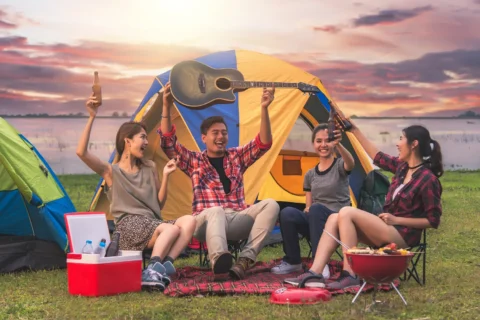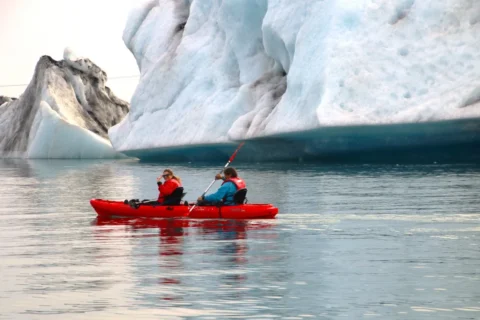The Essential Guide to Dry Bags for Outdoor Adventures
When you love outdoor adventures, you need to keep your gear safe and dry. This is where a dry bag comes in handy. A dry bag is a must-have item for anyone who enjoys hiking, camping, kayaking, or any activity near water. It protects your belongings from getting wet and keeps them safe. Let’s explore the benefits of using a dry bag for outdoor activities.
What is a Dry Bag?
A dry bag is a waterproof bag that keeps your items dry. It is made from durable, waterproof materials like vinyl or nylon. Dry bags have a roll-top closure that seals tightly, preventing water from getting in. They come in various sizes, from small pouches for electronics to large bags for clothes and gear.
Why Use a Dry Bag?
There are many reasons to use a dry bag. First, it keeps your items dry. Whether you are caught in a rainstorm or accidentally drop your bag in water, a dry bag ensures your belongings stay dry. Second, it is versatile. You can use a dry bag for different activities like kayaking, hiking, camping, and fishing. Third, it is durable. A good dry bag can withstand harsh outdoor conditions.
How to Choose the Right Dry Bag
Choosing the right dry bag is important. Here are some tips to help you select the best one:
- Size: Think about what you need to carry. Small dry bags are perfect for essentials like phones and wallets. Larger bags can hold clothes, food, and even sleeping bags.
- Material: Most dry bags are made from vinyl or nylon. Vinyl bags are sturdy and ideal for rough use. Nylon bags are lighter and easier to pack. Choose one based on your needs.
- Closure Type: The closure system is crucial. Roll-top closures are common and highly effective. Ensure the closure is secure to keep water out.
- Durability: Look for reinforced seams and thick material. A durable bag withstands rough handling and lasts longer.
How to Use
Using a dry bag is simple but important. Follow these steps for the best results:
- Organize: Separate items by type. Use smaller bags within your dry bag for better organization.
- Pack Wisely: Place heavier items at the bottom. This helps with balance and makes it easier to find things.
- Seal Properly: Roll the top down tightly at least three times before securing the buckle. This ensures a watertight seal.
- Test It: Before heading out, test your dry bag. Fill it with items, seal it, and submerge it in water to check for leaks.
Benefits of Using a Dry Bag
Dry bags offer numerous benefits. Here are some key advantages:
- Waterproof Protection: The primary benefit is keeping your belongings dry. No matter how wet your adventure gets, your gear stays safe.
- Durability: High-quality dry bags are tough and designed to withstand harsh conditions. They are perfect for outdoor use.
- Versatility: Besides kayaking, dry bags are useful for other activities like hiking, camping, and fishing.
- Buoyancy: Most dry bags float, making them easy to retrieve if they fall overboard.
- Easy to Clean: Dry bags are easy to maintain. Simply rinse with water and let them air dry.
Different Types
There are different types of dry bags to suit various needs:
- Standard Dry Bags: These are simple and effective for most activities. They come in various sizes and colors.
- Backpack Dry Bags: These have shoulder straps, making them easy to carry on hikes and other adventures.
- Compression Dry Bags: These allow you to squeeze out excess air, making them more compact and easier to pack.
- Specialty Dry Bags: These are designed for specific items like phones, cameras, or sleeping bags. They offer extra protection and features.
Tips for Maintaining Your Dry Bag
Taking care of your dry bag ensures it lasts longer. Follow these tips:
- Clean Regularly: Rinse your bag with fresh water after each use, especially if it has been in saltwater.
- Dry Thoroughly: Let your bag air dry completely before storing it. This prevents mold and mildew.
- Store Properly: Store your dry bag in a cool, dry place. Avoid direct sunlight, as UV rays can weaken the material.
- Inspect for Damage: Regularly check for holes or tears. Repair small damages immediately to maintain waterproof integrity.
Best Practices
Using a dry bag properly enhances your outdoor experience. Here are some best practices:
- Secure Your Bag: Attach your dry bag to your kayak, backpack, or tent using clips or bungee cords. This prevents it from getting lost or floating away.
- Balance Your Load: Distribute weight evenly in your kayak or backpack. Place your dry bag in a spot that maintains balance.
- Access Essentials Easily: Keep frequently used items at the top of your bag. This makes it easy to grab things without unpacking everything.
- Double Bag Important Items: For extra protection, double bag important items like electronics. Use small dry bags within your main dry bag.
Using Dry Bags for Different Activities
Dry bags are versatile and useful for many outdoor activities. Here are some examples:
- Kayaking: A dry bag is essential for keeping your gear dry while paddling. Attach it securely to your kayak.
- Hiking: Use a dry bag to protect your belongings from rain and river crossings. Backpack dry bags are ideal for this.
- Camping: Keep your clothes, food, and equipment dry with a dry bag. This is especially useful in wet or humid conditions.
- Fishing: Store your tackle, bait, and personal items in a dry bag to protect them from water splashes.
- Traveling: A dry bag can be useful for protecting your belongings from unexpected weather or spills during trips.
Conclusion
A dry bag is an invaluable piece of gear for anyone who loves outdoor adventures. It keeps your belongings dry, adds buoyancy, and enhances your overall experience. By choosing the right dry bag and using it properly, you can enjoy worry-free adventures in nature. Whether you’re kayaking, hiking, camping, or fishing, investing in a quality dry bag is a smart decision.
Embrace the freedom of exploring the outdoors with confidence, knowing your gear is protected. A dry bag transforms your outdoor experience, allowing you to focus on the beauty and thrill of nature. So, gear up with a dry bag and set out on your next adventure with peace of mind.










